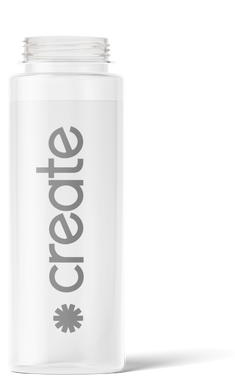The Great Debate: Does Your Body Naturally Produce Creatine?
Does Your Body Naturally Produce Creatine?
Creatine, a popular dietary supplement among athletes and fitness enthusiasts, is known for its potential to enhance athletic performance and increase muscle strength. But have you ever wondered if your body has the ability to produce creatine naturally? Creatine, a naturally occurring compound synthesized within our bodies, is crucial for energy production. It maintains a baseline level necessary for essential bodily functions. Some bodies and dietary habits may also need creatine supplementation to reach optimal performance, especially for athletes. Try Create’s gummies full of creatine to fulfill all types of athletic body needs!
Does Your Body Naturally Produce Creatine?
Your body naturally produces creatine, primarily in the pancreas, kidneys, and liver, through a series of biochemical reactions involving the amino acids arginine, glycine, and methionine. This endogenous creatine is then stored in the form of phosphocreatine, which serves as an essential energy reservoir in muscle cells and other tissues, contributing to overall energy metabolism and cellular function. Athletes who supplement their diet with creatine can increase this energy reserve and consequently improve their performance.
How Is Creatine Produced In The Body?
Creatine synthesis and its role in cell energy production, particularly in muscle cells, is a complex process. The process of creatine production can be broken down into several steps:
Step 1: Arginine And Glycine Availability
Creatine biosynthesis begins with the availability of two amino acids, arginine, and glycine. These two amino acids are obtained from the diet or recycled from endogenous protein breakdown. Arginine serves as the primary precursor for creatine synthesis, while glycine is also necessary for the process. These amino acids should be present in sufficient amounts for the body to produce creatine effectively.
Step 2: Arginine: Glycine Amidinotransferase (AGAT) Reaction
The AGAT reaction occurs primarily in the kidneys. During this reaction, the enzyme AGAT catalyzes the transfer of an amidino group from arginine to glycine, forming guanidinoacetate and ornithine as byproducts. This step is considered the rate-limiting step in creatine synthesis, meaning it determines the overall speed of creatine production.
Step 3: Guanidinoacetate Methyltransferase (GAMT) Reaction
The liver is where the GAMT reaction occurs mostly. With the help of the enzyme guanylyl adenosine monophosphate-dependent methyltransferase, the methyl group from S-adenosylmethionine (SAM) is moved to guanidinoacetate. This makes creatine and S-adenosylhomocysteine (SAH). SAM is generated from methionine, another necessary amino acid, and functions as a universal methyl donor.
Step 4: Storage And Transport
Once synthesized, creatine is transported to various tissues and organs through the bloodstream. Skeletal muscle tissue serves as the primary storage site for creatine, which plays a crucial role in energy metabolism. Creatine helps regenerate adenosine triphosphate (ATP), the primary energy source for muscle contraction, allowing muscles to perform at higher intensity levels for a much longer time.
What Food Sources Contain Creatine?
Creatine is something our bodies make. It helps us do things like lift weights or run fast. Our body makes it in our kidneys, liver, and pancreas. We can also get it from food, like certain meats, fish, and vegan sources. Eating these foods helps us have more energy for activities. Foods that contain creatine include:
Animal-Based Sources
Creatine is primarily found in animal-based foods such as beef, pork, chicken, and fish. These sources of creatine are considered to be highly bioavailable, meaning that the body easily absorbs them and can deliver significant nutritional benefits. In particular, red meats like beef and lamb are some of the richest sources of creatine, and a 16-ounce steak can deliver up to 2 grams of creatine. Other animal-based sources of creatine per hundred grams of food include:
- Chicken breast: 0.3 to 0.4 grams of creatine
- Tuna: 0.4 grams of creatine
- Herring: 1.1 grams of creatine
- Salmon: 0.9 grams of creatine
- Rabbit 0.4 grams of creatine
Raw Meat And Seafood
Raw meat and seafood may have more creatine than when cooked or processed. The reason behind this is that heat denatures proteins, resulting in lower levels of amino acids. This can help give your body energy for running fast or lifting weights. While it is important to be mindful of the potential health risks associated with eating extra raw food. Consuming uncooked meat and seafood can expose you to various bacteria, including E. coli and salmonella, which can lead to serious illness. Some raw meat and seafood dishes having creatine include:
- Sushi
- Amsterdam ossenworst
- Pittsburgh rare steak
Vegetarian And Vegan Sources
While animal-based sources are the most common and effective sources of creatine, there are a few vegetarian and vegan sources that are full of arginine, glycine, and methionine, which are used to produce creatine in the body. These sources, such as fruits, vegetables, grains, and legumes, are not as abundant or as highly bioavailable as animal-based sources, but they can still provide some nutritional benefits. Some vegetarian and vegan sources of creatine per cup include:
- Nuts: almonds (3.5g arginine, 2.1g glycine), walnuts (2.7g arginine, 1g glycine)
- Seeds: Pumpkin (6.9g arginine), Sesame (4.8g arginine)
- Spirulina: 4.6g of arginine and 3.5g of glycine
- White Beans: 1.2g arginine
Do Some People Naturally Produce More Creatine Than Others?
Yes, some people naturally produce more creatine than others. Several factors affect creatine production, such as:
Genetic Variations
Genetic variations play a significant role in determining an individual's natural production of creatine. The genes involved in the synthesis of creatine are located on the X chromosome and, therefore, have a greater impact on males as they only have one X chromosome. This means that males are more likely to have higher levels of creatine production than females. Moreover, genetic variations in the genes that regulate the transport of creatine to the muscles can also affect its uptake and utilization in the body.
Gender Differences
As mentioned earlier, males tend to have higher levels of creatine than females due to the presence of only one X chromosome. The testosterone level in males is also higher, which can lead to higher levels of creatine production. However, studies have also shown that this gender difference becomes less pronounced after puberty. This may be due to the surge of hormones in females during puberty, which can affect creatine synthesis.
Age
Creatine synthesis tends to be more efficient during times of growth, such as childhood and adolescence. As individuals age, the rate of creatine synthesis may decline, leading to potentially lower levels of endogenous creatine and a decline in muscle mass and performance. This decrease in creatine production is due to a decline in the enzymes that are responsible for its synthesis. Therefore, older individuals are more likely to benefit from creatine supplementation than younger individuals.
Physical Activity And Exercise
Physical activity and exercise are among the most significant factors influencing the natural production of creatine. Regular physical activity and exercise increase the demand for energy, which in turn increases the need for creatine in the muscles. This increased demand stimulates the body to produce more creatine. Studies have also shown that athletes who engage in high-intensity training tend to have higher levels of creatine in their muscles than sedentary individuals.
Dietary Factors
Diet can easily influence the whole body. Creatine can be obtained from specific foods, such as meat and fish, which are rich in creatine precursors. Individuals who consume diets low in these foods may have lower creatinine levels in their bodies. Furthermore, vegetarian and vegan diets have been shown to have lower levels of creatine in individuals due to the absence of creatine sources in their diets. Taking foods high in arginine and glycine, the amino acid precursors for creatine synthesis, and taking care of dietary habits with adequate rest are the essential steps for the proper production of natural creatine.
How Can You Measure And Monitor Creatine Levels In Your Body?
Monitoring creatine levels in the body can provide valuable information about overall creatine metabolism, kidney function, and muscle health. Several methods are available for assessing creatine levels, such as:
Blood Tests
Creatine levels can be assessed by measuring the concentration of creatine in the blood. The most commonly measured parameter is serum creatinine, a byproduct of creatine metabolism. Elevated serum creatinine levels may indicate impaired kidney function or an increased breakdown of creatine. However, it is important to note that serum creatinine levels can also be influenced by factors such as age, sex, and muscle mass.
Urine Tests
Urine tests can provide information about creatinine excretion and overall creatine metabolism. By measuring urine creatinine levels, healthcare professionals can assess renal function and estimate creatine production and clearance. Increased urine creatinine levels may indicate higher creatine turnover or impaired kidney function, while decreased levels can suggest reduced creatine synthesis or muscle wasting.
Creatine Clearance
Creatine clearance is a calculation that estimates the rate at which creatine is filtered by the kidneys and excreted in the urine. This test requires the measurement of creatine levels in both blood and urine samples collected over a specific time period, usually 24 hours. Creatinine clearance can help evaluate kidney function as it provides an estimate of the glomerular filtration rate (GFR), which is the rate at which the kidneys filter waste from the blood.
Imaging Techniques
Magnetic resonance spectroscopy (MRS) is an imaging technique used to measure the concentration of creatine in specific tissues, particularly skeletal muscle. MRS can provide valuable insights into muscle creatine levels and alterations in creatine metabolism. This non-invasive technique allows researchers and clinicians to monitor creatine levels in vivo and assess the effectiveness of creatine supplementation or interventions aimed at modulating creatine metabolism.











